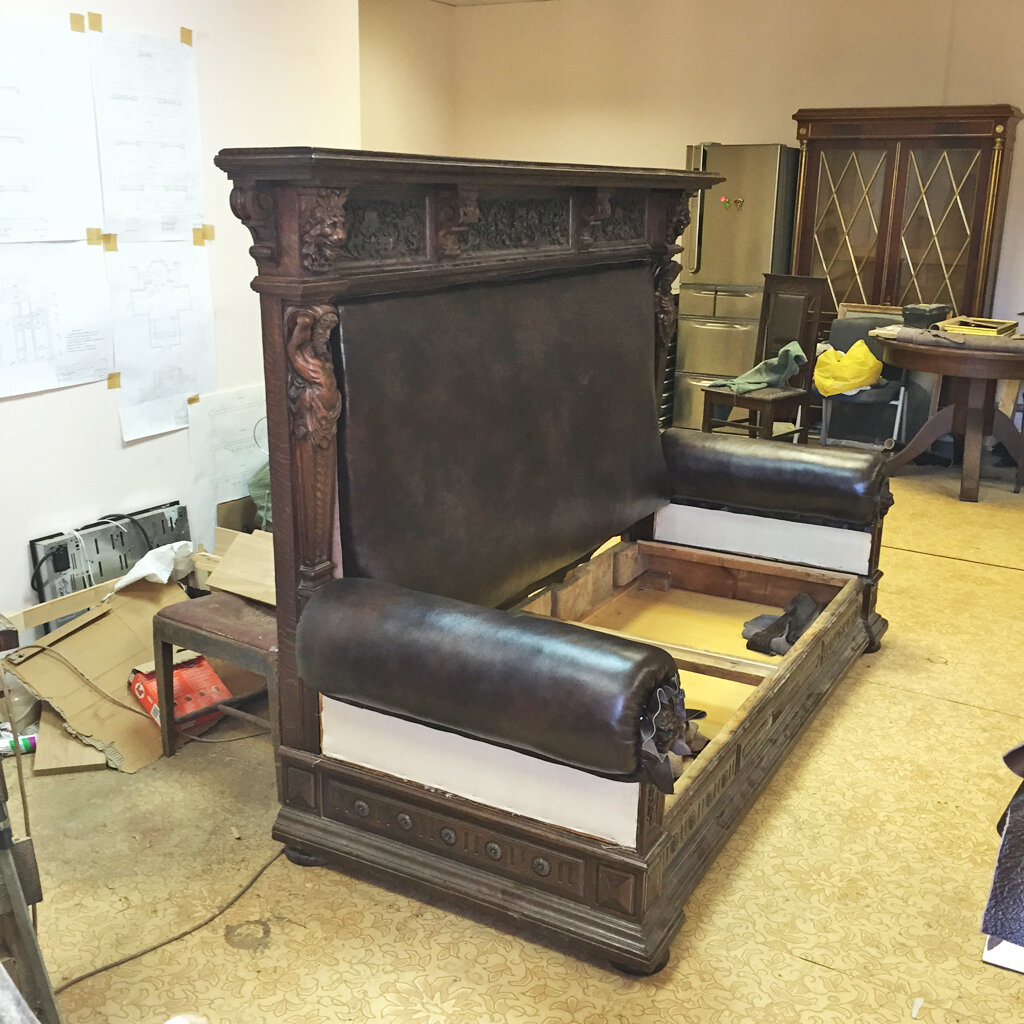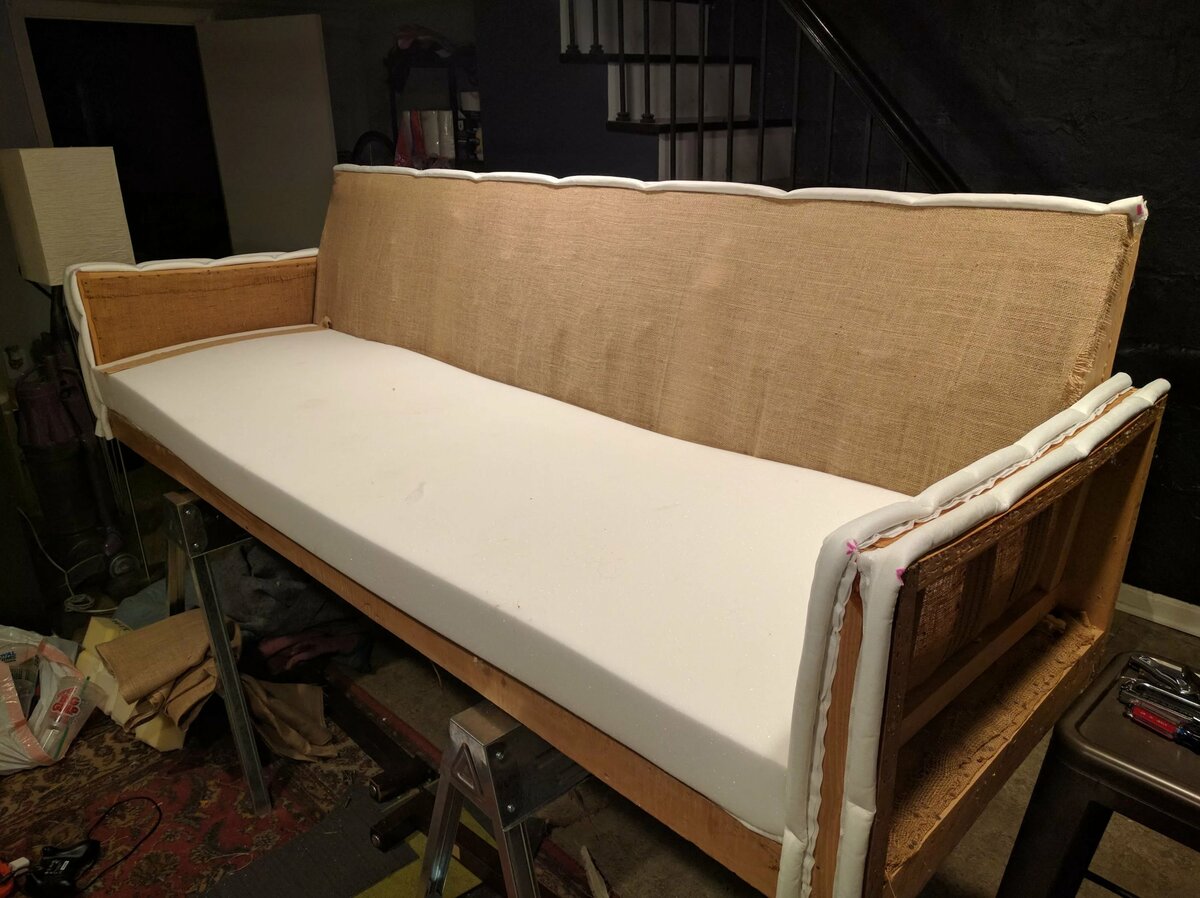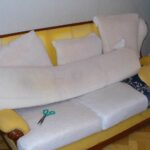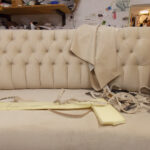How to restore a sofa with your own hands
It is no wonder that over the long years of service, the sofa not only loses its representative appearance, but can also become completely unusable. It is not always possible to purchase new furniture. But the restoration of an old sofa is a laborious process, but quite feasible.
If you have certain skills in working with wood, and your hands are able to use various tools, then all the work can be done independently.

What can you do with an old sofa
Damage needs to be assessed soundly before scheduling repairs. It is possible that a sober look at a thing that has served for many years will make you think about buying a new sofa. But even when it is decided to visit a furniture store, you should not immediately drag the old ottoman to the landfill. It can still make very good and useful things in everyday life.
Craftsmen advise using an old sofa to make the following products:
- Set of poufs. If the design was modular, then it is easy to break it into parts. And to restore the appearance, change the coating.
- New bed. For this, a serviceable spring block from a sofa-book, French folding bed or accordion is suitable. It is only necessary to make a frame for an impromptu mattress.
- Couches. If the soft block has good preservation, then it can be fixed on a coffee table of a suitable size.
- Soft benches. The spring part of the old sofa can be placed directly on the pallets. This will result in a low bench that can be used in the kitchen or summer cottage.
- Garden swing. For this purpose, constructions without a transformation mechanism are well suited. Anchor brackets are screwed into the lower part of the sofa. They are joined by a cable or chains, which are securely attached to the crossbar.
If you carefully look around and connect your imagination, then you will definitely find several more options for using a sofa that has served its life.
Do-it-yourself restoration of an old sofa
If it is planned to continue using the structure for its intended purpose, then it is necessary to carry out repair work. They can be quite serious. Carpentry skills may be required if new parts are to be made. And maybe everything can do with "little blood" - only by correcting the appearance.
What elements are to be replaced
There is a misconception that in order to restore a sofa, it is enough to change the upholstery on it. But wear processes do not only affect the outer material. After a long and especially intensive service, the frame of the structure often deteriorates.
Therefore, before repairing, pay attention to the following factors:
- Outer cover. Usually leather or fabric material fades and rubs.
- Filler. As a rule, it loses its elasticity.
- Wooden frame. If it looses, then it must be fixed. If there are cracks on the elements, then they need to be replaced.
- Transformation mechanism. It can jam due to skew. Problems also arise with fittings or return springs.

Note! If replacement is required, it is best to find parts from the original manufacturer.
Otherwise, there is a possibility that the element will have an incomplete fit and subsequently it will fail faster.
Required tools and materials
It is not necessary to use the same materials as in the old sofa. Perhaps they are already outdated, and more modern types are sold in stores. Filling and upholstery fabrics are purchased only after old materials have been removed from the frame and accurate measurements have been taken.
For work, you need to prepare:
- screwdriver;
- screwdrivers;
- pliers;
- stapler;
- nylon thread;
- a needle with a large hole;
- tape measure and pencil;
- chalk for cutting;
- universal glue;
- sandpaper for wood parts;
- grease for the transformation mechanism.

Stages of work
Do-it-yourself sofa restoration is carried out in stages. Each operation is carried out without haste. And only after completing the previous one, they proceed to the next. Consider how to restore a sofa that has fallen into disrepair with your own hands in more detail.
Preparation and disassembly of the product
In the process of disassembling the structure, the scale of the restoration is assessed. First, the sidewalls with armrests are removed. For this, the fastening bolts are unscrewed from the inside. Then dismantle the seats and backrest. After that, the frame is examined for defects.
Important! When dismantling, it is better to arrange the fittings in different packages and be sure to sign each one. This makes subsequent assembly easier.

In order to remove the old upholstery, all staples must be removed. Usually there are several layers of thin felt or padding polyester under the fabric. It is better to replace this material with a new one later. When the filler is detached, the reusability of the filler is evaluated.
But it should be remembered that this material usually lasts no more than five years. If replacement is required, then it is necessary to measure the thickness, width and length of the plates.
Last of all, the integrity of the springs is checked. Typically the unit will perform well for several decades. But if there are burst elements or they creak, then they must be replaced.

Choice of materials
Do-it-yourself restoration of an old sofa always means changing the upholstery material. Usually they choose inexpensive and practical furniture fabrics that are easy to care for.
Perfect for these purposes:
- jacquard;
- velours;
- chenille;
- flock;
- tapestry;
- eco-leather;
- microfiber.

But you can also use natural leather with success. The cost of restoration will simply increase significantly.
For the filler, use:
- foam rubber;
- polyurethane foam;
- latex.

The latter is more preferable because it is durable and environmentally friendly. But the first two are cheaper.
Repair of elements
They begin to restore the old sofa from the frame. It is there that the replacement of wooden blocks is most often required. Then they move on to the fittings and the spring block.
The sequence of operations is as follows:
- The damaged elements of the frame are updated.
- Explore the transformation mechanism. If bent parts are present, then they are not restored, but replaced with new ones.
- Rust is removed from the spring mechanism (using WD-40) and fresh grease is applied.
- The new filler must be laid on the felt base and glued.
- A layer of synthetic winterizer or holofiber is laid.
- The upholstery fabric is cut to size, always leaving a sufficient margin (5-10 cm).
- Having fastened one end on either side of the frame, the fabric is pulled (not too tightly) and fixed with a stapler on the other.
- Then the material is leveled and fixed from the sides.
Note! Old covers may come in handy. From them you can easily take measurements for cutting new material.
Assembly
The repair is completed with the installation of the structure:
- The base is being assembled.
- Install the side parts. Make sure that there are no creaks and backlashes.
- The backrest is fixed.
- The seat is mounted.
- Sidewalls are hung.
- If there is, then decorative elements are installed.
Assembly steps are similar to dismantling, but in reverse order. To avoid confusion, it is recommended to record all processes on the camera when disassembling the structure.
The final stage
After the furniture has been assembled, the sofa is set in place. At this stage, the final decoration of the structure with various elements is carried out.
Features of constriction or replacement of upholstery
Even an experienced master is never too lazy and will photograph all the elements from all sides. This will save you from mistakes in work. Also images can be used as templates.
Removing the old
Remove old fabric carefully. When working, make sure that neither the material itself, nor the elements of the furniture are damaged. The seams should never be torn. Better to rip them open with a boot knife. A staple remover is used to remove the staples. In extreme cases, carefully manipulate the screwdriver.

The fabric is removed in the following order:
- Putting the sofa on the back, release the lower base.
- Then the outer part of the back and armrests is processed.
- The same is done with the internal parts.
- Finish with a seat.
Sewing new upholstery
The old upholstery is not thrown away, but used as a template. It is pre-ironed with an iron, and then applied to a new material.
When cutting upholstery, take into account the following points:
- If the element will consist of two pieces, then it is necessary to leave an additional 10-15 mm of fabric for subsequent sewing with threads.
- The edges to be stapled must be increased in size by 50 mm.

The cut elements are sewn together with strong threads, and then fixed to the frame with staples. Some craftsmen use decorative furniture nails in this case.
Decorating the sofa
The finishing touch will be the decoration of the structure. This can be easily done using pillows or small poufs. They can be laid out in different places on the sofa, creating additional charm.

You can also make a carriage coupler. Usually this technique is used only for the back. As a rule, large decorative buttons are used, which are sewn in a checkerboard pattern. For tightening, you need a strong thread, which is fixed on the back of the back.
You can also strengthen the armrests. But it is better to do this in advance, when the structure is completely disassembled. Wide strips of wood are glued to native elements, decorating them in unison with the rest of the details.
Advantages and disadvantages of restoration
All the pros boil down to the following:
- The family budget is significantly saved. This is the main advantage, since repairs are always cheaper than buying a new thing.
- Preservation of antiques. Antique items have a decent value. But if they have visible defects, then the price drops dramatically. Therefore, it is better to update them before selling them.
- It's easy to find the right color scheme. It is always easier to buy fabric in the desired color than a ready-made item.
- Replacing the material with a better one. If there is no hesitation in cash, you can turn an old sofa into an exclusive thing.
- Knowing the weaknesses of the structure, you can eliminate these problems by reliably strengthening the parts.

We can say that there are no downsides at all. Well, except for one thing. Instead of a new sofa, you will have to use the old one.
To restore a sofa that has lost its attractive appearance is not only profitable economically. At the same time, various possibilities open up, how to use a thing dear to the heart further for its intended purpose, and find a new use for it.
Video: restoration of a sofa-book



















